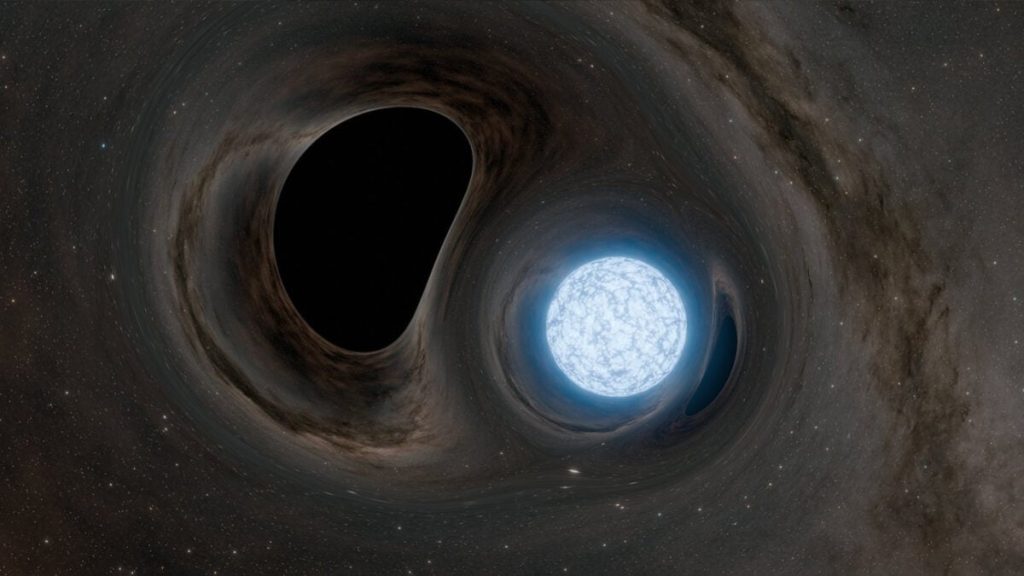When a black hole and a neutron star finally meet, the result is cosmic carnage—and now, thanks to Caltech’s latest supercomputer simulations, we’re getting a front-row seat to the whole terrifying show.
In a new pair of studies published in The Astrophysical Journal Letters, researchers led by Caltech astrophysicist Elias Most ran the most detailed simulations to date of neutron star–black hole mergers. These violent events are some of the most extreme in the universe, and the new work reveals what happens just seconds—and even milliseconds—before the neutron star is obliterated.
One of the papers, published last year, describes the simulated results of quakes on the surface of neutron stars before they are swallowed by black holes. The other paper, published at the end of March, dove into the “black hole pulsars” and monster shockwaves produced by the violence.

The above snapshot from the team’s simulation shows magnetized outflows of plasma that are launched outward from a black hole after the merger with a neutron star. As the black hole’s gravity grabs hold, the neutron star’s ultra-dense crust doesn’t just stretch—it cracks.
“The neutron star’s crust will crack open just like the ground in an earthquake,” said Most, in a Caltech release. “The black hole’s gravity first shears the surface, causing quakes in the star and the opening of rifts.”
That cracking triggers Alfvén waves, or magnetic ripples that whip across the star like a snapped rope. These waves may generate fast radio bursts, the millisecond-long radio flashes we occasionally detect from deep space. And for the first time, the simulation shows how these tremors could make neutron stars produce extreme shock waves that emanate out into the universe.

In a follow-up simulation, the team modeled what happens as the black hole swallows the neutron star, and it’s even more intense than those gigantic tremors. The collapse sends out shock waves that are among the most powerful theorized in the universe. These, too, may release a burst of radio waves, or even X-rays and gamma rays, in a final flurry before radio silence.
But that’s not all. The team’s simulations also revealed a black hole pulsar, an exotic object that behaves like an ordinary pulsar, or a rapidly spinning star that flashes light out into the cosmos. As its name suggests, a black hole pulsar hosts a black hole at its center instead of a star.

For a fleeting moment after devouring its neutron star lunch, the black hole is surrounded by magnetic winds that mimic a pulsar’s lighthouse-like beams. This hypothetical object had been theorized, but now we have a detailed idea of how one might form—and how to look for it.
The team used the Perlmutter supercomputer at Lawrence Berkeley National Laboratory to simulate these interactions.
“When you simulate two black holes merging,” Most said, “you need the equations of general relativity to describe the gravitational waves. But when you have a neutron star, there’s a lot more physics taking place including the complex nuclear physics of the star and plasma dynamics around it.”
Reviewed in concert with real-world data from groups like the LIGO-Virgo-KAGRA Collaboration, these simulations could help scientists identify and better understand neutron star–black hole collisions.



